You are a great resource and keep me honest!
Work continued on the hull top with the rear top hatch. This is going to be one of the two working hatches on the vehicle. The other is the driver's hatch. The engine cover and the rear access hatch are going to be fixed since the tiny styrene hinges are just not going to hold up. Already the engine hatch's left hinge is broken just in attempting to snap it together.
The top hatch has three pieces of add-on armor which I glued in only to find that there are two eye pads that needed to be glued in first. Luckily, it was just a short time after putting on the armor so I was able to break the glue joint without damaging anything, glued in the two eyes and put them back on. (arrows)
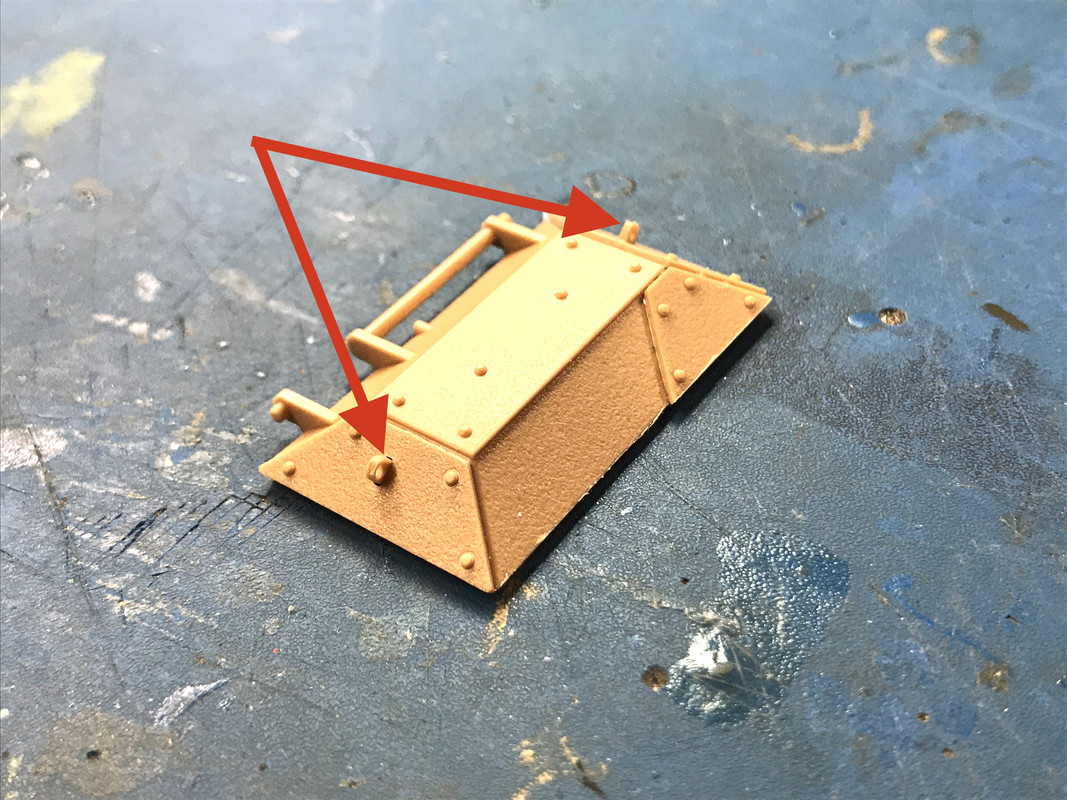
There's a latch and hand grab that went inside the hatch, and a decal. I'm not going to paint this interior since it's body color and won't be faded or badly weathered. I put the decal on now. I want this hatch closed when I paint the body so I won't have to mask the opening.
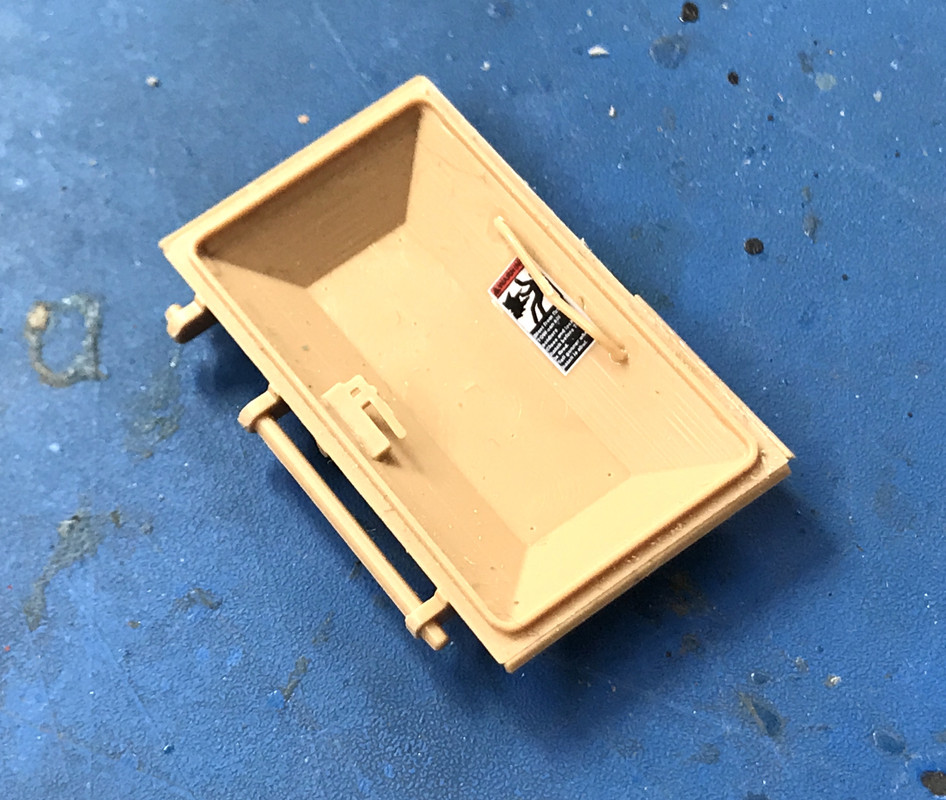
The two outer hinge pads are real. The center one is not... just for show. The hinge pins are robust and the hatch works well. The black "X" shows another "Q sprue" missing part space.
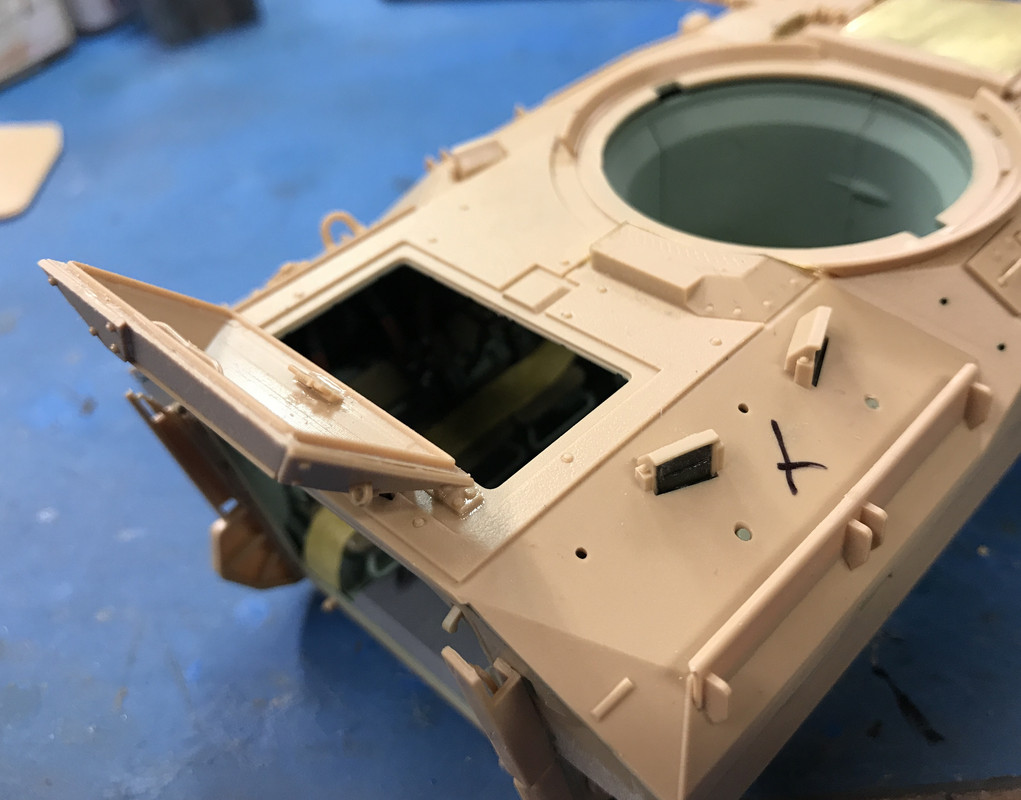
There's a bunch of assembly before the rear crew door gets installed. There's a link that ties to the actuating arm that I had to tape to keep it from getting lost. After you glue that in, you glue in the male part of the door's hinge. The other side is molded into the inner door face.
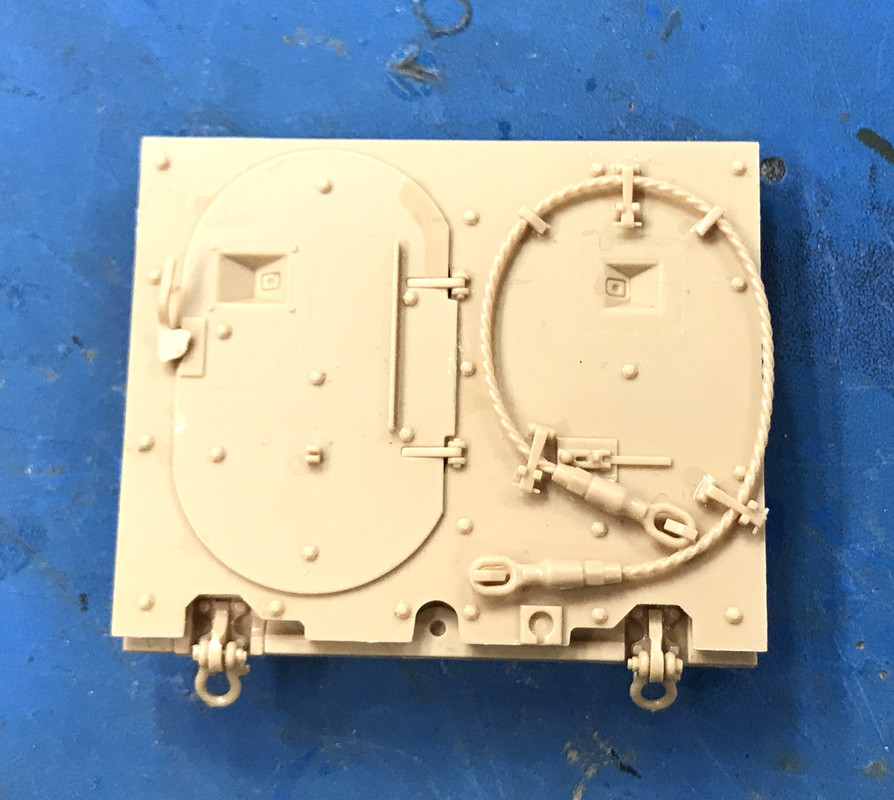
The detailing on the model is stunning!
The door jamb on the body had parts to install also. Notice the tiny female hinge components on the frame's bottom. They will break! Those are the kinds of parts that should be investment cast brass, or brass plate fabrications.
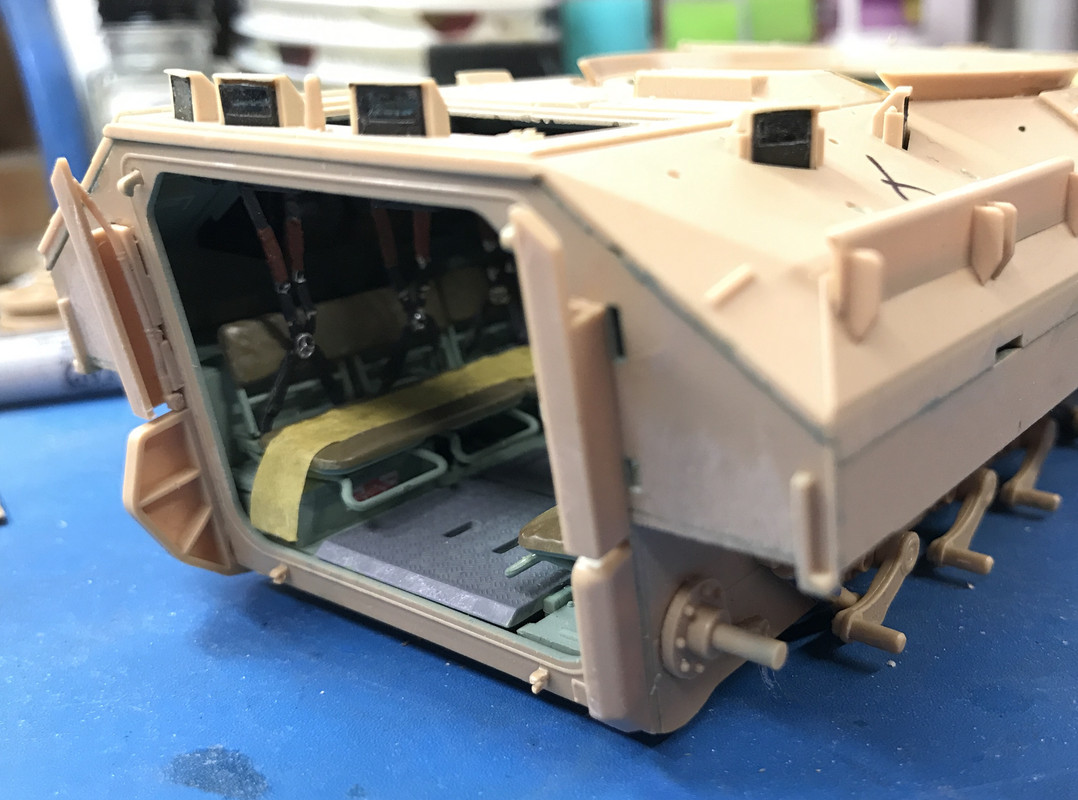
I was able to install the link and get the door in place and it will stay closed during painting. The tow cable had to get glued to the door's face. Do it now or later? It would be easier to paint off the door, but gluing it on would require touchup. So I decided that I would be able to paint the cable on the door without making too much mess.
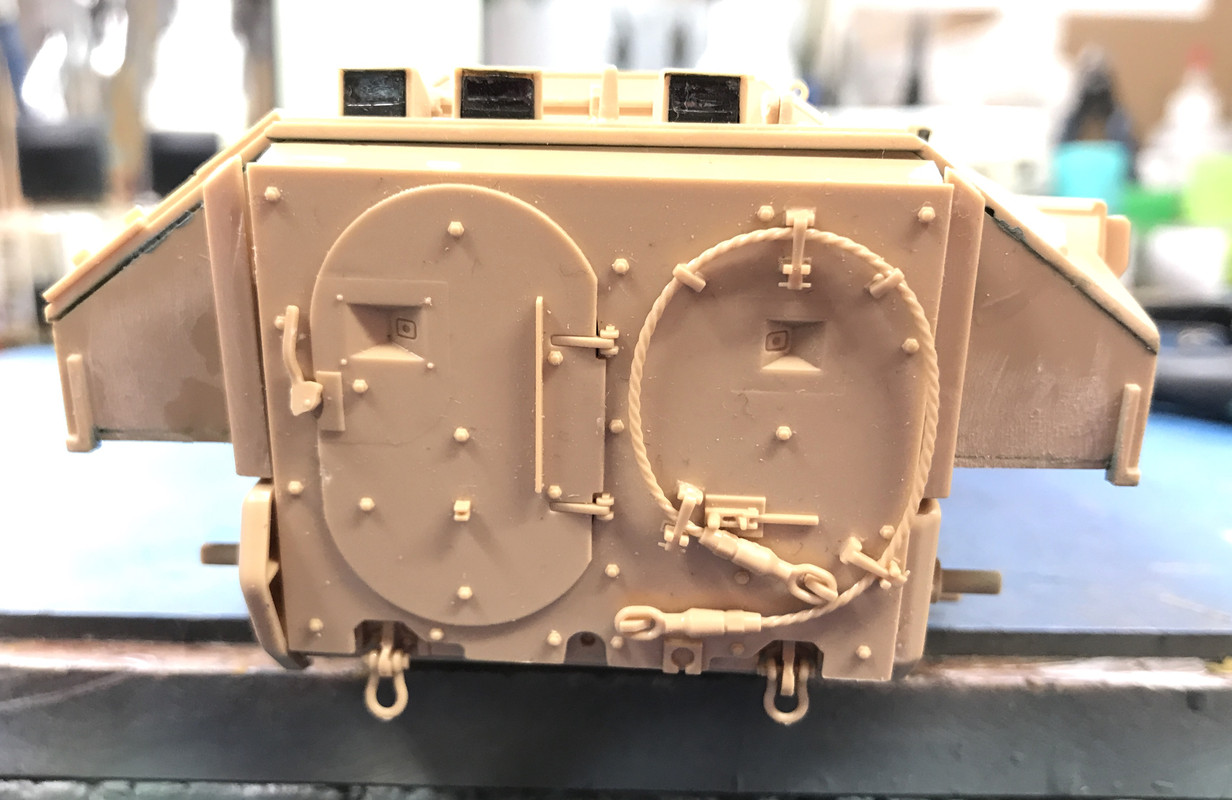
I masked the turret hole and with that, the body is ready for the paint shop.
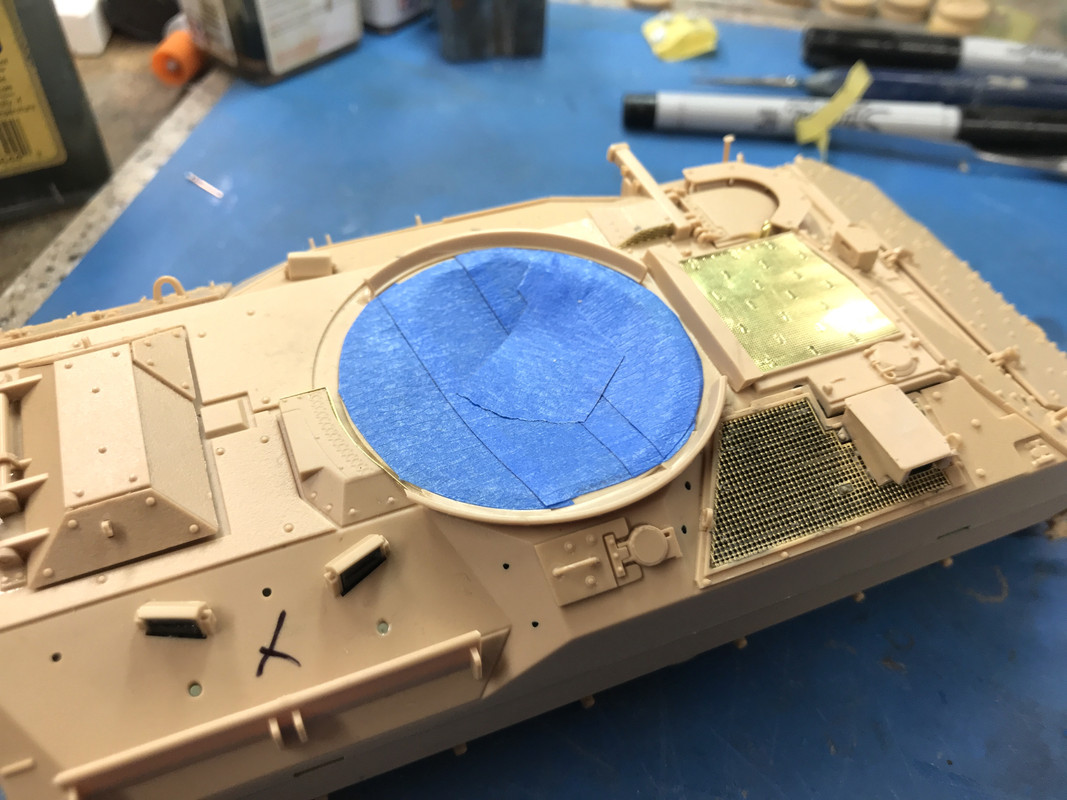
Can't paint the body until the rest of the "Q" parts get done. I've had steady communications from Meng Customer Service asking for my mailing address. That means (to me) they're going to send me the sprue. I'll be working on the turret
And I started working on the treads. While I was excited that these were snap together single part tread pieces in comparison to the Rye Field Sherman where each tread had 7 parts and had to be all glued without getting any on the hinge pins, it isn't a slam dunk. I will explain.
Here's the pile of parts. It's daunting, but I like it. I'm an optimist. I know there's a pony somewhere in that pile of manure. You start with one piece and then two and do it 160 times.

But before you can click them together, you have to clean them up. They molded in pairs. The outer ejection stubs were easy to clip off with flush cutters. The inner connectors were in a position that wasn't conducive to flush cutters. I didn't want to cut them with a #11 blade since a slip could damage the mating surfaces. I sharpened the end of an old #11 blade so I could plunge cut the connectors without getting near the hinges.

This tool worked pretty well, but there was also more flash on some percentage of the link sets. I used my regular #11 to remove these.
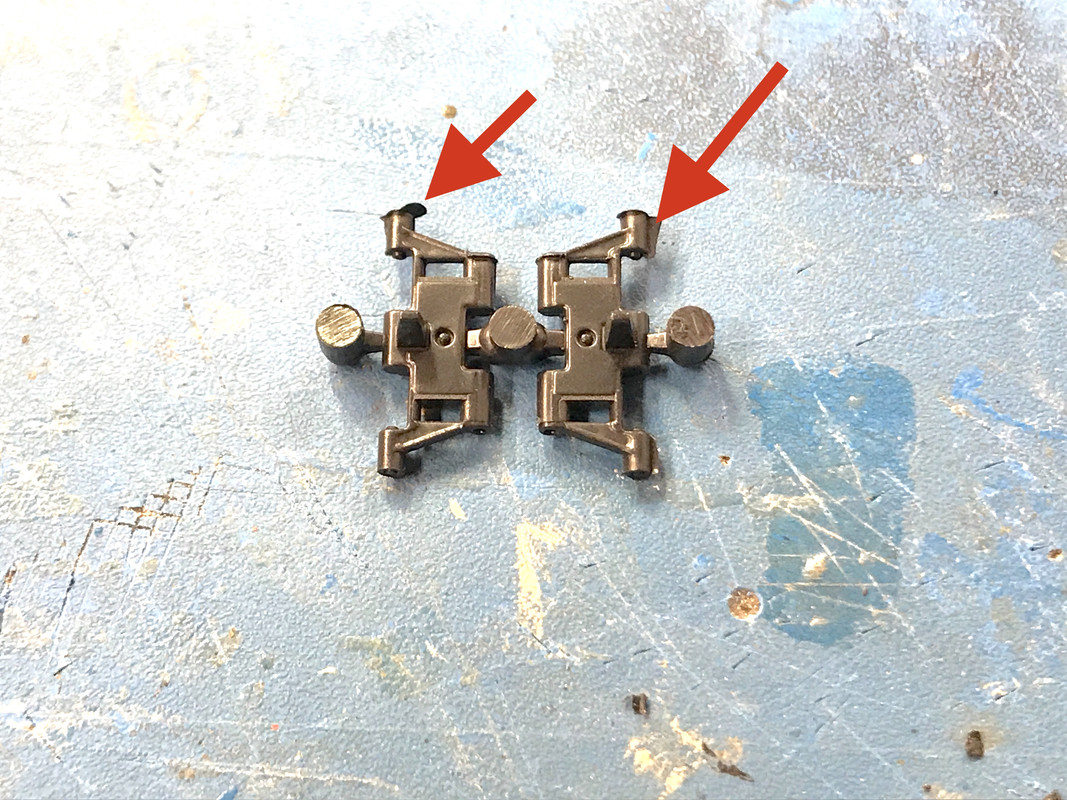
I found that it was easiest to put the links together by grabbing the guide lug and having it facing the mating link, tilting the link so the nub on the near side engages and then snapping in the second side. Some fit more snuggly than others. In fact, some are so insecure that the tread will probably break if you try to "play" with this model even though they will articulate.
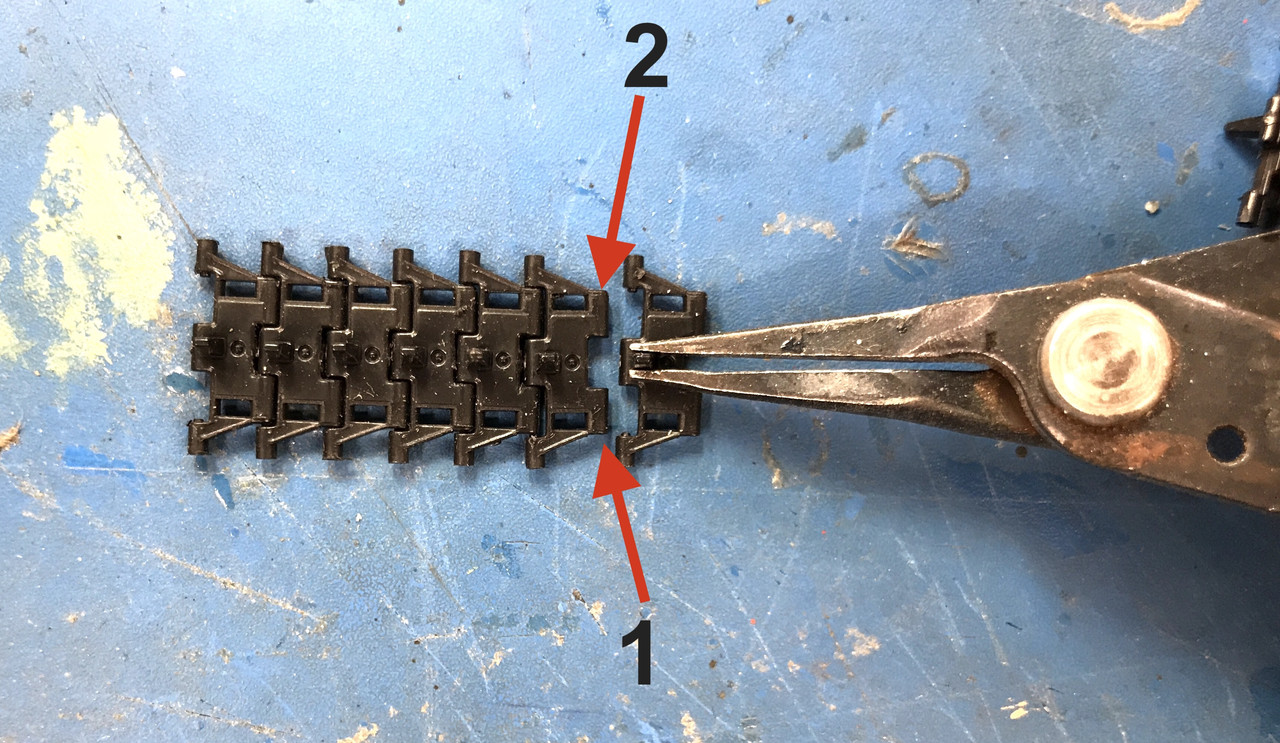
The model requires 80 links per side. I'm building them in sets of 10 which when I get 8 sets will be joined into a complete tread. Having them molded in twos makes it easy to pick 10 out of the big pile. The model has 8 extra pieces. One already got damaged. This was about one hour's production. I got faster as I went... learning curve.
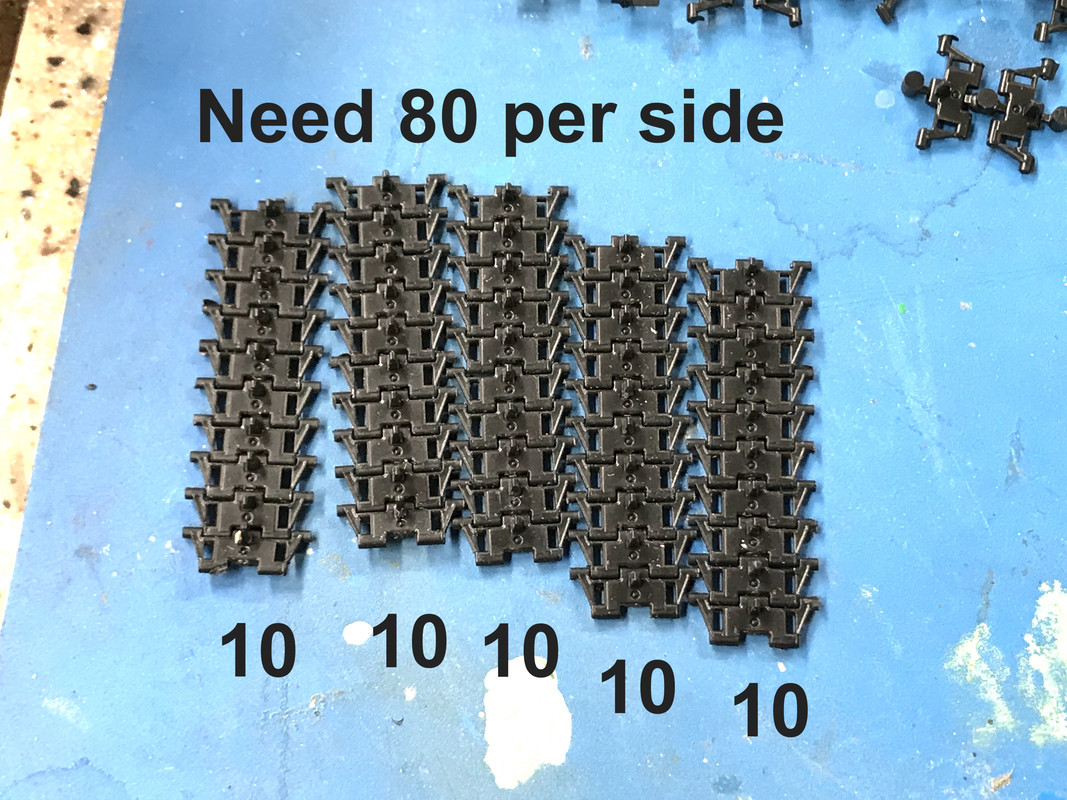
As I'm getting familiar with the Bradley and with my intimate knowledge of the M113 APC, it's really obvious that, even though both were made by FMC, and both are essentially aluminum boxes, the Bradley (especially in the BUSK configuration) is so much more robust. You can actually survive in a Bradley. The APC was a different thing entirely. 2 inches of aluminum would stop a rifle bullet, but not anything made to hurt armor.